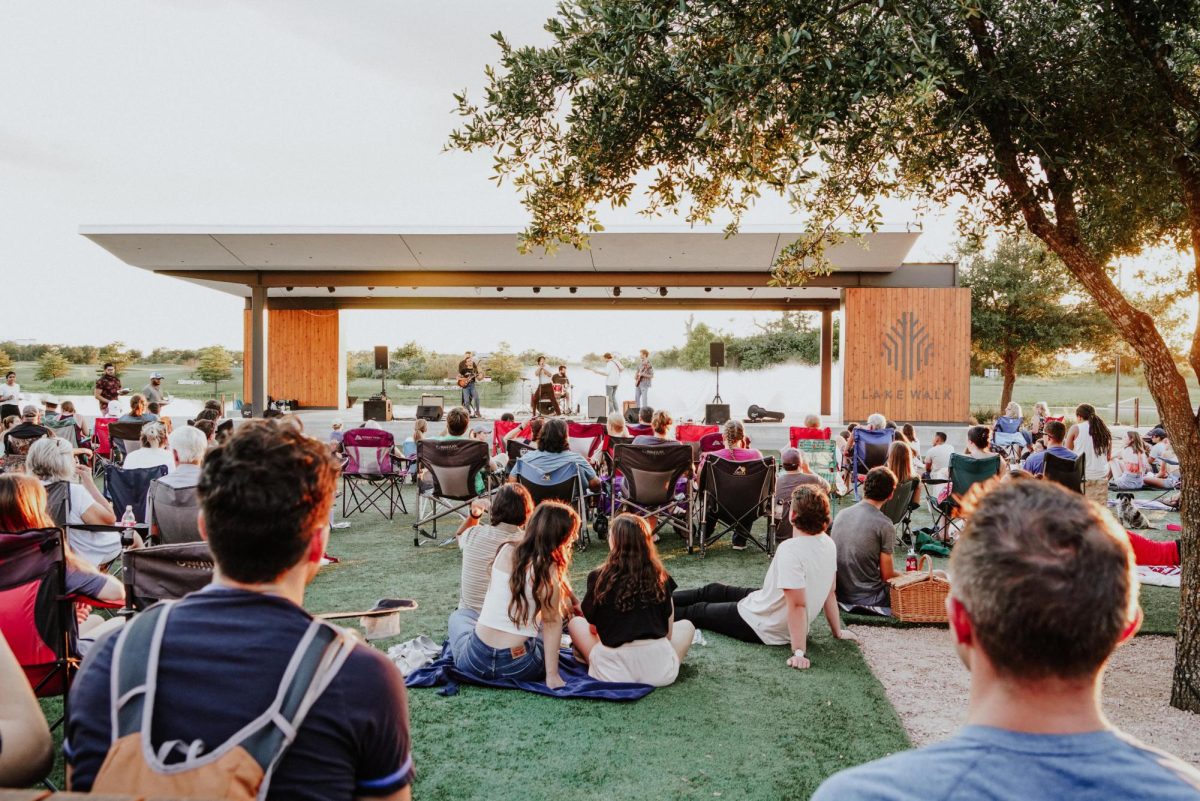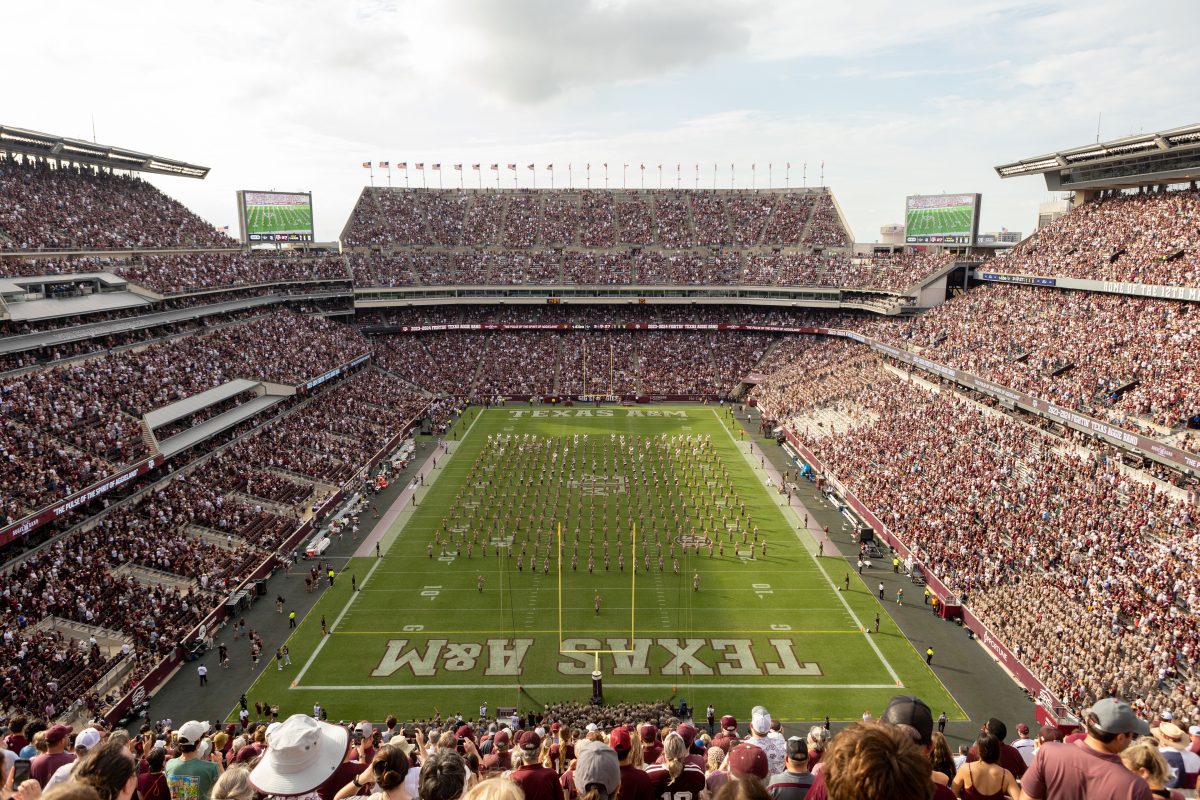The Aggie Bonfire was one of the most celebrated and anticipated traditions at Texas A&M. Working as one through hard labor, sweat and determination, bonds were forged that could only be described as familial.
November 18, 1999 was a day that irrevocably altered Texas A&M University. At 2:42 a.m., the stack fell, injuring 27 students and killing 12. It has now been almost 14 years since the tragedy, and yet it remains an integral part of the spirit of A&M, commemorated by a memorial that allows Aggies from everywhere to reflect and remember the past.
“The remembrance and the memorial prove that we are all family, even the 12 that died,” said Amanda Chow, special education graduate student. “Now we build for them. They put their heart and soul in it, so we do too.”
Though the University no longer sanctions the Aggie Bonfire, the spirit of the tradition lives through an off-campus student bonfire.
Chow, part of the off-campus student bonfire and former leadership for Lechner Hall, said the bonfire memorial, holds a reverence that always moves her to tears.
“I am always in tears when I go to the memorial,” she said. “It shows how much heart and soul there is at A&M. It is a symbol.”
Charlie Nelson, senior political science major and a former crew chief for Lechner Hall, said the bond created while working on bonfire is special.
“The biggest part about bonfire is that it helps create community and family,” Nelson said. “Hard work and labor can’t help but bond you with your buddies and your friend – after a week of mental work with school, it is a nice compliment to work bonfire.”
All of this, he said, is what made and continues to make bonfire important and meaningful to him.
Nelson said the subtleties of the Bonfire Memorial were all designed with a purpose, and that adds to the reverence of the site.
“There is a lot of symbolism involved,” Nelson said. “The granite that makes the portals was all one solid piece. The black top you walk on was made because the designer wanted it to have a certain sound when people walked on it. There are reasons for every single step that you don’t always think about.”
Visitors to the memorial enter at “Tradition Plaza” and a vertical wall separates the peace and intimacy of the memorial from the outside world. Engraved into the wall is “The Last Corps Trip,” a poem traditionally recited before the lighting of Bonfire each November.
The walkway leading into the “Spirit Ring” is lined with 89 granite blocks, each representing a year in which Bonfire burned between 1909 and 1998. Notches cut a point in each of the stones to represent November, the month Bonfire burns, and each notch is illuminated by an amber light, to represent Bonfire’s glow. A black slab marks the year 1963, in which Bonfire was disassembled log by log after President John F. Kennedy’s assassination.
Plaques in the stones representing 1955, 1982 and 1996 memorialize students who were killed in Bonfire-related accidents in those years.
The 16-foot granite portals – with interior 12-foot bronze portals – mark each of the 12 Aggies lost in the collapse of 1999.
“The portals represent each individuals’ lives and were built to honor them,” said Jordan Allison, a senior international studies major and campus tour guide. “As tour guides, we like to memorialize all of the Aggies and we respect Bonfire Memorial dearly.”
The 12 portals are oriented toward the hometowns of those who died in the collapse. The portals are connected with 27 stones with bronze inlays to represent those who were injured, forming a ring to represent the common bond connecting each to the Aggie Spirit.
At the center of the Spirit Ring, a black-granite marker sits in the exact spot used for centerpole, the stack’s center support. The marker is engraved with the date and time of the Bonfire collapse: 11-18-1999 2:42 a.m.
Nelson said his membership in the Aggie family provides him with a personal connection to the 12.
“When I visited before I became a student, it was just 12 people,” Nelson said. “When I became an Aggie, they became my family. It’s just one additional thing we have in common. Bonfire is the best way for me to explain the Aggie family – it means more when you have a connection to it. We feel closer to the 12 as well. They died doing what they loved and what they enjoyed.”
The memorial was dedicated in 2004 by then University President Robert Gates.
“This memorial is a special place where Aggies always will remember those lost and injured in the tragedy of 1999 and throughout the history of Bonfire,” Gates said at the ceremony. “We celebrate their lives and the unique Aggie Spirit represented by Bonfire: a Spirit that gave light to our darkest hours; a Spirit that unites the Texas A&M family; a Spirit that will endure in all those who come here; a Spirit that must burn brightly forever.”
Nelson agreed with the sentiment expressed by Gate’s presentation at the ceremony.
“The memorial is, for a lot of people, the link to when Bonfire was on campus,” Nelson said. “I think it links current students to the past and keeps the tradition of hard work. A lot of people at A&M, I think, are grounded in work ethic and this memorial represents that.”
Nelson said incoming students should visit the memorial, and current students shouldn’t forget to stop and pay their respects during their time at A&M.
Chow said the memorial is an important part of A&M’s identity as a university.
“It embodies the Aggie spirit, even in a tragedy,” Chow said. “We remember who they were as people. It shows that everyone is an individual, we are all a part of the University and no matter what we will remember that. The memorial has made sure no one would be forgotten.”
There’s a spirit…
July 1, 2013

Donate to The Battalion
Your donation will support the student journalists of Texas A&M University - College Station. Your contribution will allow us to purchase equipment and cover our annual website hosting costs.




















